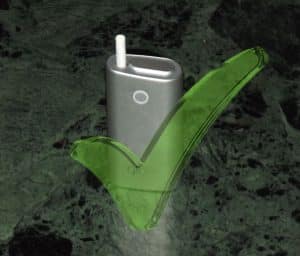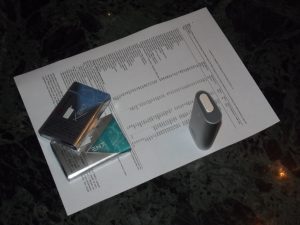
Tasmania isn’t a place you tend to hear of much. Apart from giving us interesting animals like the Tasmanian devil it just sits there south of Australia being quietly… well, Tasmanian. Well, I wish it would keep doing that, because the latest news from the island is not good for Heat not Burn. It isn’t true either, but since when did that stop the media – not to mention the usual crowd of “public health” pests – from making a fuss?
A team of researchers led by Dr Sukhwinder Sohal of the University of Tasmania has just produced a study which, they claim, shows that vaping – whether with HnB products or conventional e-cigarettes – is just as bad for you as smoking.
As a long-time vaper I’ve heard this claim before, of course, and it’s been rubbish every time. That’s not so surprising, but I do get a bit irked by the fact that it’s rubbish for the same reasons every time. These people are scientists, after all. They’re smart. So why do they keep making the same stupid mistakes?
I have to say, this Tasmanian study makes a lot of mistakes. Think the title of this post is a bit harsh? Well, it isn’t. Sohal’s work is junk of the purest sort, although we all just know the newspapers will lap it up. I’m an optimist though, so let’s tear it apart and make an attempt at getting the truth out there.
Yes, it’s junk
Sohal’s aim was to investigate whether vaping – specifically with iQOS – caused the same damage to lung cells as cigarette smoking. To make the comparison, the researchers bubbled iQOS and e-cig vapour, and cigarette smoke, through a liquid medium and then diluted it to varying concentrations. These solutions were applied to human airway and lung cells, and the cells were examined for signs of stress or damage.
Right here we have the first problem – I can’t quite call it a mistake. The vapour and smoke extracts were tested on cell cultures in a dish. This is pretty standard for basic testing, and it does have its uses, but you certainly can’t go saying vaping is as bad as smoking on the basis of it. Two types of cells were tested – airway epithelial cells, and smooth muscle cells. These are both found in human lungs, but not as a loose collection of cultured cells in a dish. Instead, they’re part of an intricate structure that includes a whole load of systems designed to protect cells and keep them alive.
I have an ex-girlfriend who’s a senior research associate in a very prestigious biochemical research lab. A big part of her job is growing and caring for cell cultures, and what I kept hearing from her was that if you put a bunch of cells in a petri dish, all they want to do is die. Yes, if you soak some cells in iQOS vapour extract a bunch of them will die. There’s some scientific value in measuring how fast they die compared with those soaked in cigarette smoke extract or water freshly drawn from the fountain of youth, but the bottom line is cell cultures like to die. Well-done testing on cultures can come up with useful information, but it just CAN’T be used to justify statements like “IQOS exposure is as detrimental as cigarette smoking and vaping to human lung cells.”
Isolation isn’t good
The big mistake Sohal and his team made is to look at one factor in isolation. It’s the same mistake these clowns always make when they compare the effects of vaping and smoking – they pick one factor, find the same effect (although usually much more severe with smoking) then inflate that to “OMG vaping’s just as bad!!!” The factor Sohal and his team looked at was chemistry. The experiment they used simply dissolved chemicals out of smoke or vapour, then tested the effect of those chemicals on cells in a dish – which got sick and died, of course.
This doesn’t really tell us anything useful. Sure, the cells were a bit poorly after their chemical bath – but in an actual lung, with all its defence mechanisms, they’d probably have been fine. The thing about cigarette smoke is there’s a lot more to it than chemistry. It’s a dense blend of chemicals, vapours and solid particulates, much of which won’t dissolve when it’s bubbled through a medium.
Sohal claims, on the basis of his research, that vapour is just as likely to cause serious lung diseases like COPD as smoke is. He is, quite frankly, talking rubbish – and anyone who’s up to date on the literature should know that. E-cigs aren’t new anymore; millions of people have been using them for up to a decade and a half. If vaping caused COPD we’d know all about it by now, because people like Sohal would be showing us cases in actual human patients. They can’t; that’s why they’re still pickling cell cultures in a dish.
In fact there are many recorded cases of people whose COPD symptoms have stabilised, or even reduced, after they switched to vaping. If vapour was just as damaging we’d have expected their symptoms to continue to worsen, just as they would have if they’d kept smoking. This doesn’t happen, and that’s real-world evidence from actual lungs. That is a lot more persuasive than Sohal’s work on cell cultures.
Of course iQOS is new, but we can call on basic science to help us out here. Sohal calls Heat not Burn a hybrid of smoking and e-cigarettes, but of course it isn’t. An iQOS isn’t just heating tobacco to generate its vapour. I’ve watched HEETs being made, and while tobacco is the major ingredient in the filling the actual vapour is generated from PG, just like in an e-cig. The tobacco mainly provides flavour; it isn’t being vaporised. What this means is that the vapour from an iQOS is, from the point of view of a lung, very similar to e-cig vapour and not at all like cigarette smoke. After all smoke is a combustion product, and iQOS doesn’t burn anything. There is no reason to believe that using an iQOS – or any other HnB or vaping system – is anything like as damaging as smoking a cigarette. And I don’t care what they say in Tasmania.











